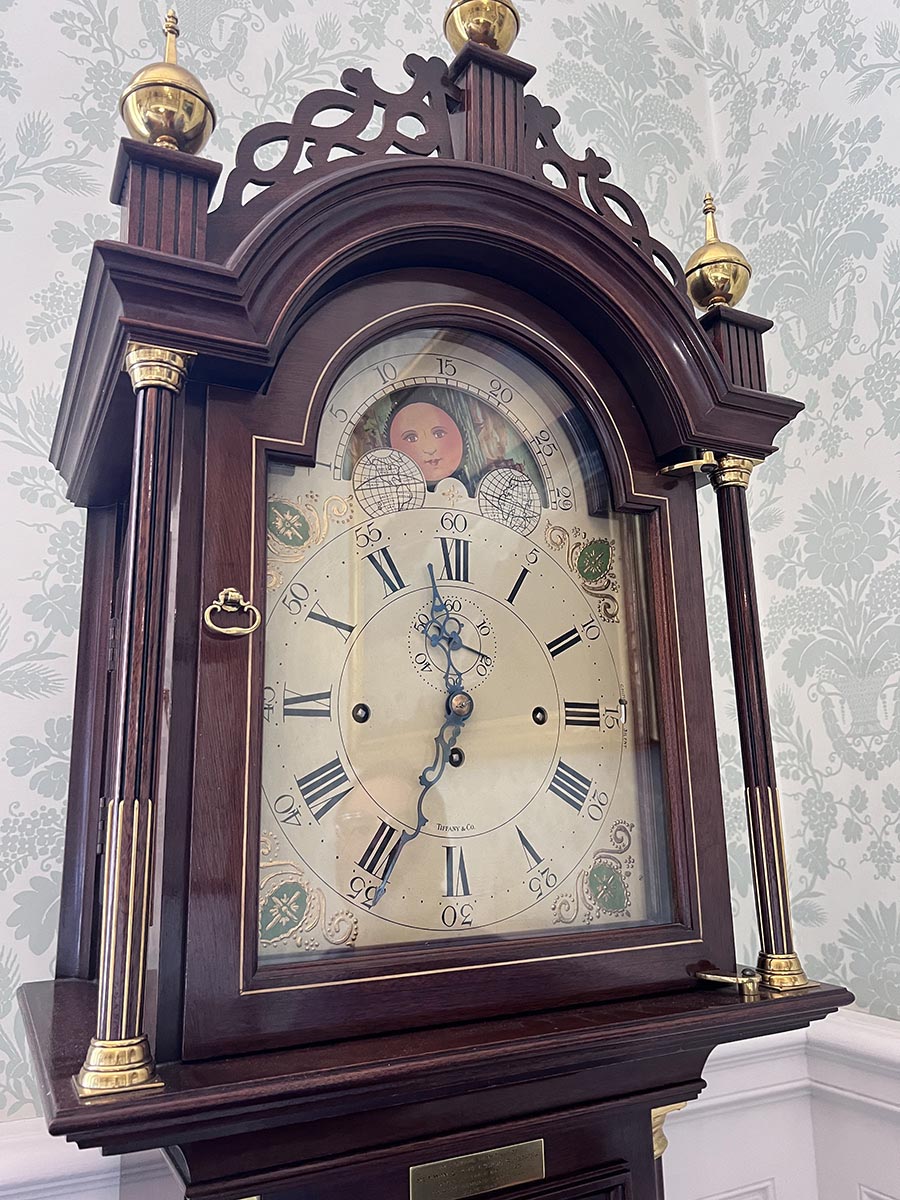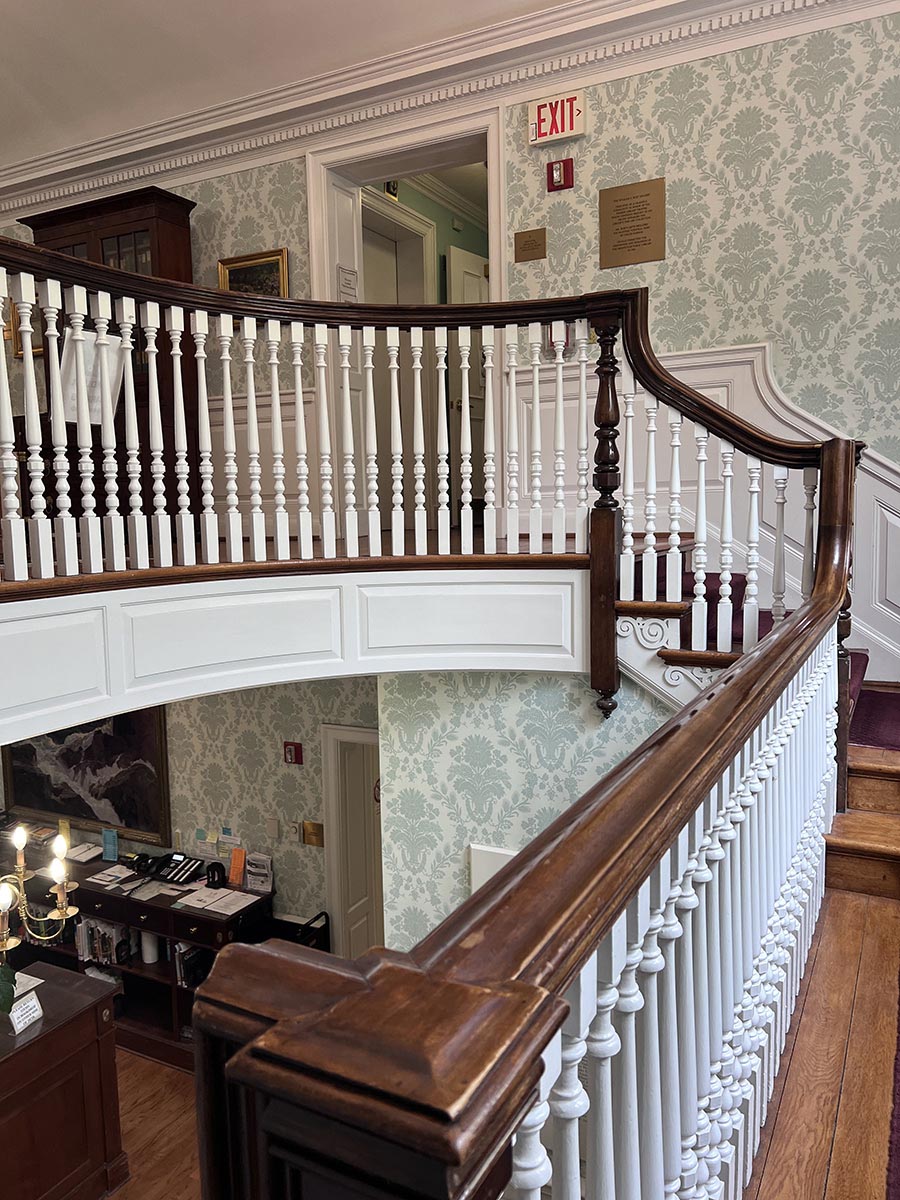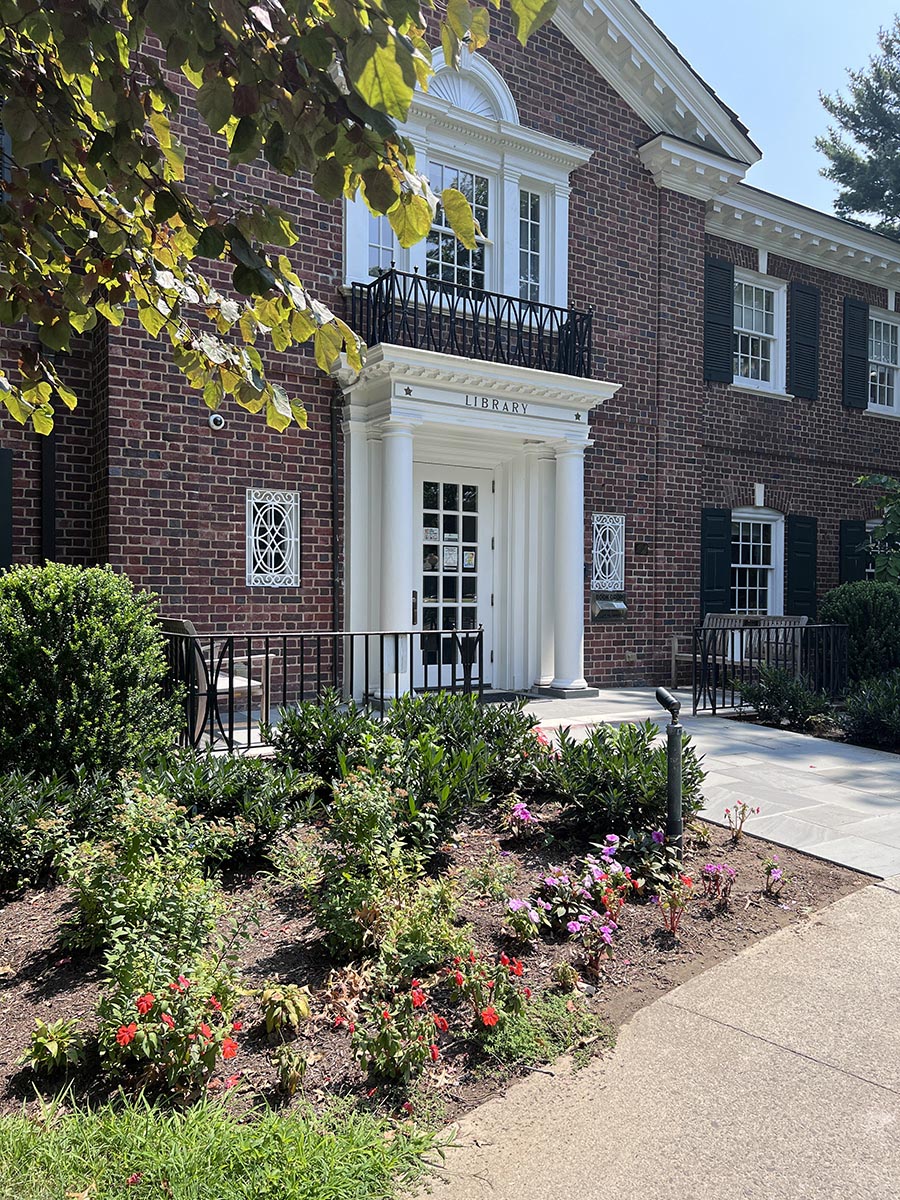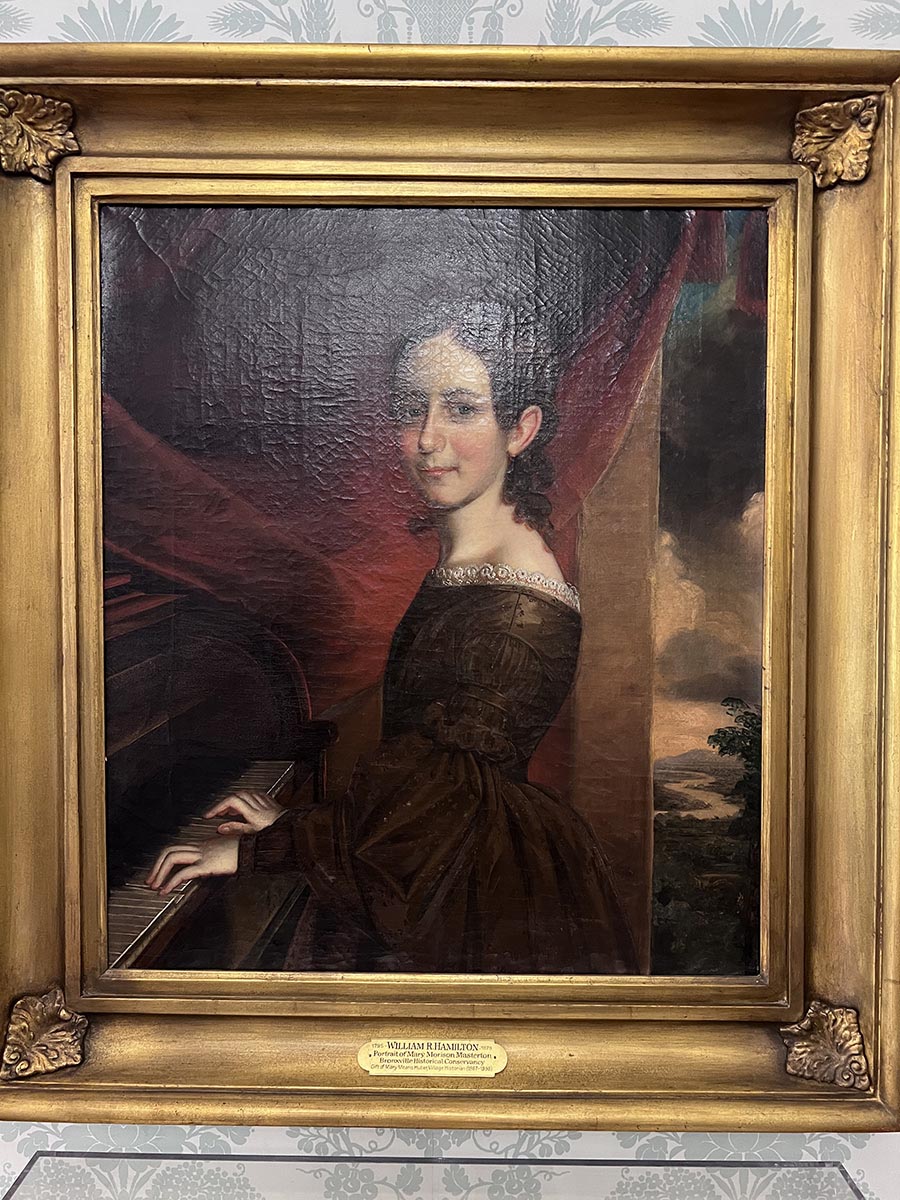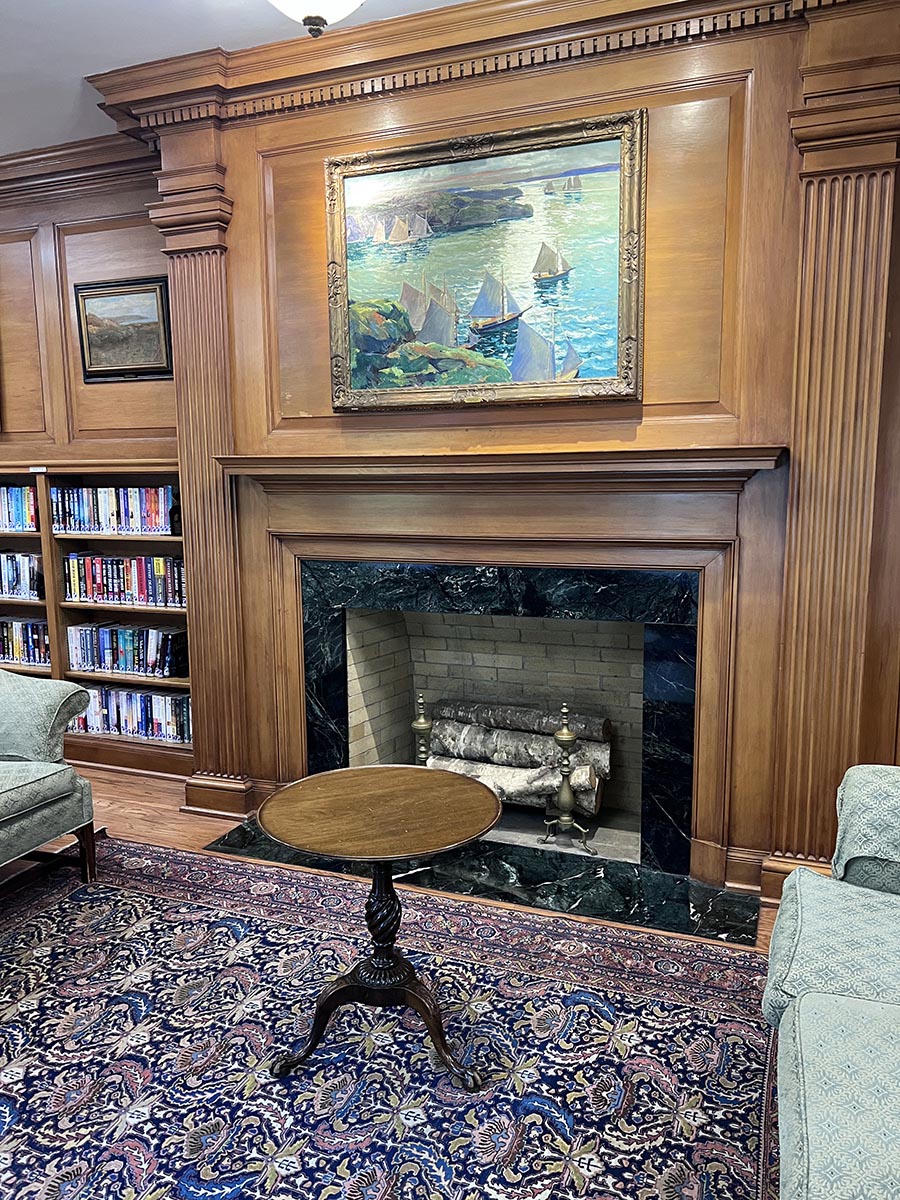Architect Harry Leslie Walker designed a beautiful little building that was an adaptation of residential Georgian architecture with pine paneling, oriental rugs, comfortable chairs and attractive draperies that added to the home-like atmosphere. At the opening ceremonies on May 17, 1942, Library Board President Ernest Quantrell proclaimed: “Today is Thanksgiving Day for the Library Board. Since 1907 we have been working and hoping for a home of our own. Our dream has come true.”
He went on to define the mission of the new building: “A library should not only be a storehouse for books and a shelter for readers but also an influence on the community. We hope the library will stimulate an interest not only in books and architecture, but also in art and the other cultural fields.” Paintings that had been donated to the Library by residents were hung in various rooms. An art committee was formed to ensure the high standard of monthly exhibitions that were shown in a room dedicated to that purpose.
For the next fifty-six years, the Library was enjoyed by many patrons from near and far. The Bronxville Public Library has always proudly served not just the residents of Bronxville Village but also the larger community of southern Westchester County. The meeting room was the site of lectures, poetry readings, and chamber music concerts; a dedicated group of volunteers mounted exhibitions ranging from Japanese prints to American quilts to a history of the bicycle. And the book collection continued to grow until, at one point, it became necessary to discard a volume for every new one purchased – a policy no longer in place in the present day.
As the twentieth century was drawing to a close, it became clear that the Library no longer adequately met the needs of its patrons. The modest building that had become Bronxville’s de facto community center needed renovation and expansion. The Children’s Room was over-utilized and under-sized. The 1942 structure was not capable of handling the twenty-first-century needs of the community. Most significantly, the Library did not comply with the Americans with Disabilities Act.

